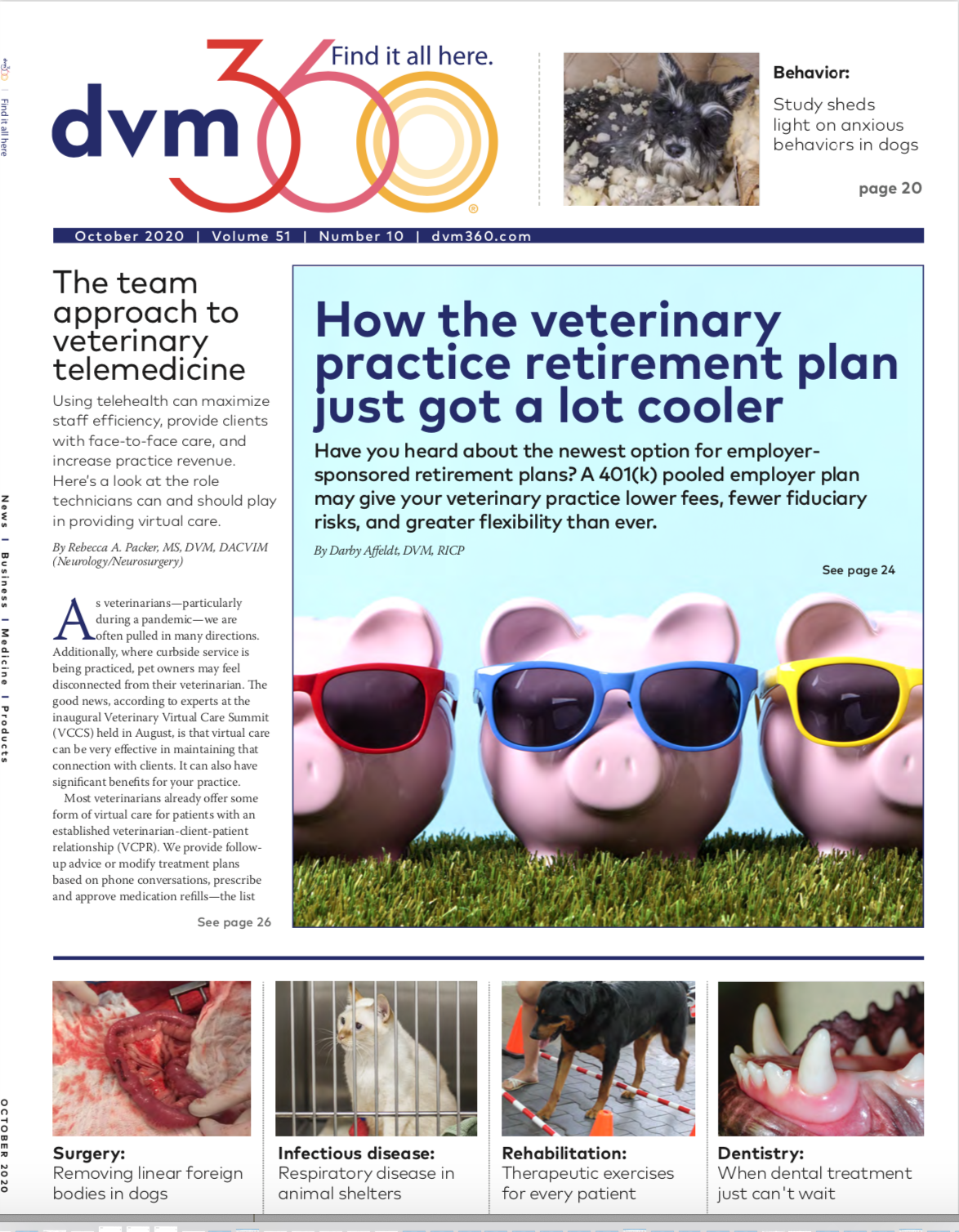The collapse of the noncompete in veterinary practice
For many years veterinary practice associates were at the mercy of their noncompete agreement. That’s not quite the case anymore. Here’s why.
Bacho Foto/stock.adobe.com

Since the dawn of civilization, people have sought to protect their “intangible” assets or “intellectual” property from appropriation by others in the world of commerce. When Felix Hoffmann patented aspirin in 1900, sale of the product was controlled until the patent expired in 1917, after which the name “aspirin” became a generic term for the substance. But during the life of the patent, Bayer made vast sums by having the market all to itself.
In the United States, legal challenges of every imaginable sort have been leveled against the effort to control the sale of a product, the market of a producer, or the clientele of a business. Litigation over restraint of trade, trade names, and trading partners has invoked every sort of legal theory—up to and including the first amendment to the U.S. Constitution. In 1970, for example, the U.S. Supreme Court ruled in Virginia State Board of Pharmacy v Virginia Citizens Consumer Council, Inc. that pharmacists were entitled, for the first time, to advertise drug prices. On “freedom of speech” grounds, the case stripped away a state law designed to protect drug manufacturers.
Should veterinary practices be entitled to anticompetitive protection?
Virtually any law or contractual provision that limits free trade, restrains free provision of services, or controls use of products or ideas is by definition anticompetitive. Through legislative action, judicial decisions, and administrative orders, government has made an ongoing effort to “strike a balance” between the proprietary rights of the creator of something having commercial value, and the freedom of public and private interests to carry out commercial activity with minimal regulation and government-imposed constraint.
In the case of copyright and trademark protection, the creator’s right to be protected is fairly clear and identifiable, but the specific nature and definition of the “protectable interest” in a professional practice is mercurial and varies depending on the relationship of the parties involved in a commercial relationship.
What exactly do noncompete covenants protect?
When a health care professional is asked to sign a noncompetition agreement, the practice owner is not attempting to protect access to medical records—clients are entitled to have these transferred in virtually all jurisdictions. Is it the relationship between client and associate that the owner wishes to sever by putting “x miles” between a departing associate and clients they have interacted with during employment? Is a relationship something that should even be amenable to government-enforced private efforts to prohibit?
It’s not so easy to define what is to be protected, and thus not so easy to decide how much protection is to be afforded by a court or statute. Hence, there is an ongoing struggle between the entities (both private and corporate) seeking to protect their business from “unfair” competition from former employees and the interests of everyone else (eg, pet owners, associates who decide to open their own clinics).
Noncompete enforcement ebbs as societal values change.
Years ago, when it came to covenants not to compete, whatever an associate signed was pretty much what they had to live with. But society is evolving, and enhanced value is placed on individuals’ rights. This metamorphosis is reflected in new statutes and court decisions emerging from states across the country. Here are some of the trends.
Rebuttable presumptions
When faced with interpreting a veterinary noncompete agreement, courts in some states will apply a legal doctrine that changes the burden of proof in a given case where enforcement of a noncompete is sought. For example, when a practice owner seeks to enforce a 3-year noncompete, rather than establishing that the former associate began competing in violation of the agreement by opening up shop 2 years after resigning from the plaintiff’s clinic, the court may start by requiring the practice to prove that it reasonably needs a noncompete over 2 years in length—a time period that prior cases (or existing statutes) have established as being highly protective.
Refusal to enforce arbitrary limitations
Even in jurisdictions where there is no established statutory or presumptive limit on the duration or geographic region of veterinary noncompetes, courts will take what I think of as a “smell test.” If a noncompete’s terms look and feel as though they were “dreamed up” by a clinic owner primarily to force former associates to move far away from the employer’s service area, a court may insist on solid proof—statistical, demographic, and otherwise—to allow a plaintiff practice owner to prevail. The legal cost and research time alone can cause a plaintiff to withdraw their complaint.
Defendants plead the rights of nonparties
Much as the Supreme Court did in Virginia State Board of Pharmacy, lower courts across the country are entertaining arguments based on the rights of nonparties to the case at hand. For example, when an associate takes a job 5 miles from a prior employer with whom they have a 10-mile noncompete, the associate’s counsel may rely in part on these sorts of arguments:
- Consumers should not be unreasonably burdened by having to travel a long distance to seek care from their preferred provider.
- A mere salaried position should not unreasonably interfere with a professional’s opportunity and availability to provide care in a particular community they wish to serve.
- The initial burden of proof in noncompete enforcement should lie with the party attempting to restrain trade, and so prove that such restraint is reasonable and necessary as it is inherently antithetical to the societal goal of fundamentally fair and unrestrained commerce.
Christopher J. Allen, DVM, JD, is president of the Associates in Veterinary Law PC, which provides legal and consulting services exclusively to veterinarians. He can be reached at info@veterinarylaw.com.

Newsletter
From exam room tips to practice management insights, get trusted veterinary news delivered straight to your inbox—subscribe to dvm360.